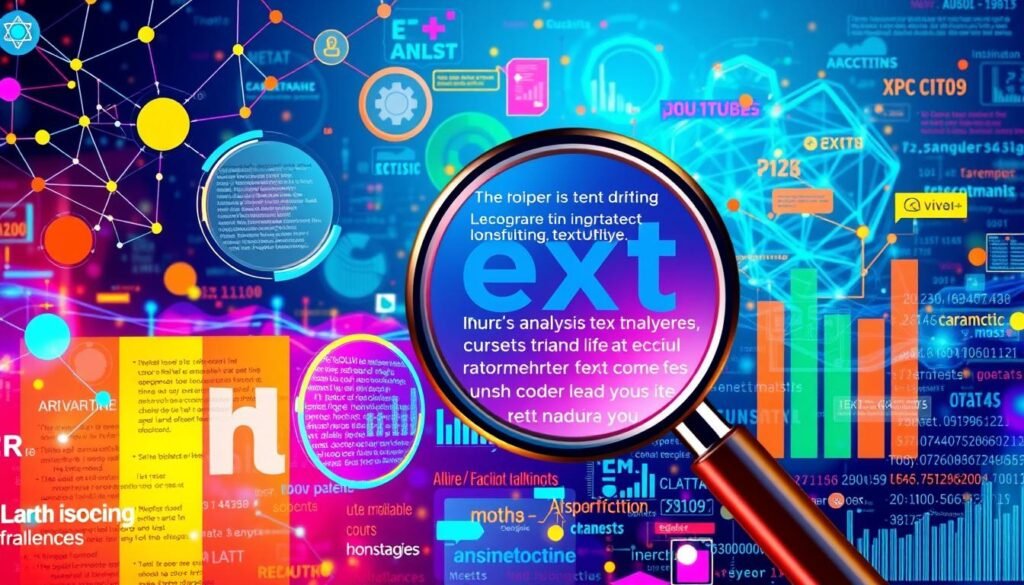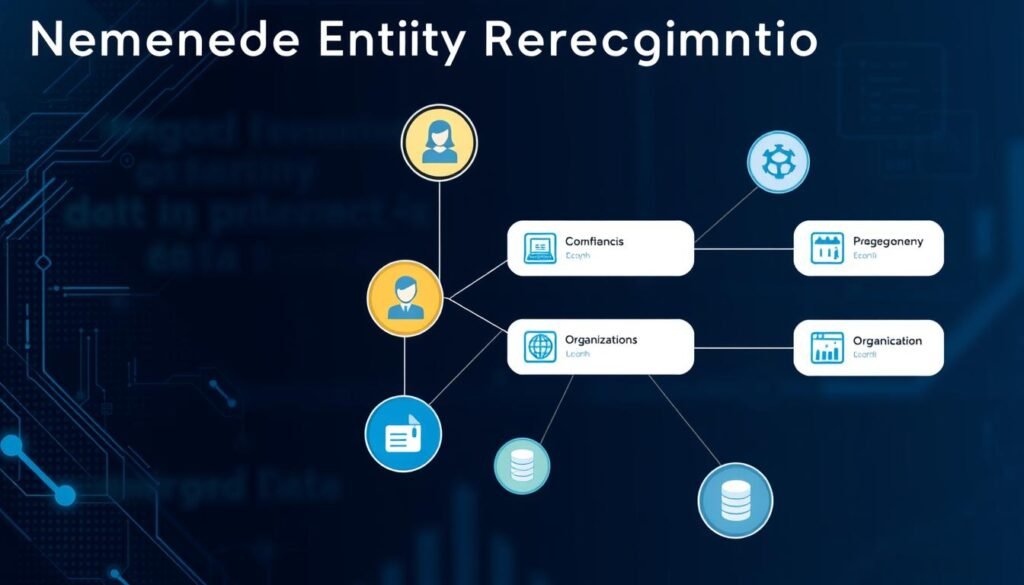Welcome to your guide for ThriveDX Task 3! This guide will give you insights and strategies to master the task. With the right techniques, you can excel in ThriveDX. We will cover what you need to know to make the process clear.
By following our tips, you’ll feel ready and informed. Let’s start this journey to success together!
Key Takeaways
- ThriveDX Task 3 requires a solid understanding of natural language processing.
- Utilizing proper strategies can enhance your performance in the task.
- Engaging with community resources can provide helpful insights.
- Text analysis techniques play a crucial role in cracking the task.
- Keep abreast of the latest tutorials for effective learning.
Understanding ThriveDX Task 3
The ThriveDX task 3 is a vital step for students aiming to do well in their studies. It mixes various ways of analyzing to fully meet task needs. Knowing what the project is about helps students get ready effectively. It ensures they understand the key parts needed for a good outcome.
Students will tackle tasks that boost their coding and analytical abilities. The project has both hands-on and theory parts. This mix gives students a comprehensive view of the topic. They should check out ThriveDX’s official task guidelines and past project examples. This makes it easier to meet the project’s expectations.
Key tasks involved in thriveDX task 3 may include:
- Conducting thorough analyses of data sets
- Implementing coding practices relevant to project goals
- Utilizing software tools for project design methodologies
- Collaborating for peer feedback and continuous improvement
To do well on thriveDX task 3, students must understand its main parts. Feedback from past students shows how key it is to be fully prepared. Engaging deeply with all parts of the project is crucial for success.
| Key Component | Description |
|---|---|
| Objectives | Integrate analytical methodologies with practical applications. |
| Task Requirements | Engagement with coding, analysis, and project design. |
| Expected Outcomes | Enhanced skills in coding and data analysis. |
| Resources | Official guidelines, project descriptions, and peer feedback. |
Importance of Natural Language Processing
Natural language processing (NLP) is key in today’s tech world, particularly in areas like ThriveDX Task 3. It improves machines’ ability to understand and analyze human language. This makes analyzing texts easier and helps comprehend data better using automated processes.
NLP is used widely across many fields. For example, customer help chatbots use it to offer instant support. Tools for analyzing feelings on social media also rely on it. These uses show how vital NLP is in enhancing various projects and academic tasks.
Many studies have showcased these uses and their benefits. As NLP keeps evolving, its potential for new applications grows too. This makes it an essential tool for work and learning.
Techniques in Text Analysis
Text analysis helps us get the gist of big texts. It breaks down huge volumes into easier bits for insight. We use tools like tokenization, stemming, lemmatization, and syntactic parsing.
Tokenization cuts text into smaller parts, called tokens. This step makes it simpler to study words or phrases closely.
Stemming and Lemmatization trim words down to their root forms. Stemming chops off ends of words. Lemmatization adjusts words based on context. Both streamline terms, so spotting trends or themes becomes simpler.
Syntactic parsing digs into how sentences are built. By understanding word relations, it brings clarity to text structure. Using these tools right can really boost your text analysis results.

| Technique | Description | Application |
|---|---|---|
| Tokenization | Divides text into tokens (words, phrases) | Initial data processing |
| Stemming | Reduces words to their stem form | Standardizes terms |
| Lemmatization | Transforms words to their base form considering context | Improves accuracy in analysis |
| Syntactic Parsing | Analyzes sentence structure | Understand word relationships |
Using text analysis techniques makes your project clearer and better. They help understand and analyze text in depth.
Machine Learning Fundamentals
Machine learning basics are key for using it well. This area includes ideas like algorithms, training models, and picking out features. Learning these lets people solve actual problems.
Algorithms are the core of machine learning. Methods like decision trees, support machines, and neural networks are important. Understanding these principles helps pick the best one for each job.
For instance, decision trees make choices clear and easy to see. They work well when you need straightforward decisions.
Model training combines data with algorithms in a learning process. This often uses labeled datasets for accurate models. For projects like ThriveDX Task 3, knowing how to train models is crucial.
Feature extraction is about finding the most helpful variables. Picking the right features can greatly improve a model’s predictions. This step is critical for success in machine learning.
Real practice like on Kaggle helps solidify this knowledge. Taking part in competitions gives hands-on experience. This is essential for anyone wanting to grow in machine learning.
Data Annotation: A Key Step
Data annotation is crucial for improving Natural Language Processing (NLP) tasks. It turns raw information into structured data. This is vital for training machine learning models effectively.
Labeling data means assigning tags to different pieces of information. These tags identify sentiments, entities, or relationships. This is essential for a model’s learning process. But, poorly labeled data can make training datasets unreliable, affecting the model’s performance.
Choosing the right tools makes data preparation easier. Tools like Prodigy and Labelbox have user-friendly interfaces. They help users manage large datasets efficiently. With these technologies, teams can achieve high data quality. This leads to better model accuracy.
To strengthen the data annotation process, follow certain best practices. Ensure annotations are consistent to build reliable datasets. Use validation steps for checking data quality. And, keep training annotators so they know the latest guidelines.
- Maintaining consistency across annotations to build reliable datasets.
- Implementing validation steps to verify the quality of labeled data.
- Regularly retraining annotators to stay updated on relevant guidelines.
ThriveDX Task 3 Answer Strategies
When you start ThriveDX Task 3, planning your steps carefully is key. You need to understand what the project requires at the start. This helps you make a good plan. Divide the task into parts and set a timeline to finish each part. This keeps you on track.
Breaking Down the Requirements
To figure out what you need to do, first look closely at the task details from ThriveDX. This helps you see what you aim to achieve. List every requirement to make sure you don’t miss anything:
- Identify main goals from the task brief.
- Plan when to do each part of the project.
- Use resources where they are needed most.
- Check your progress at set times.
Utilizing Language Models Effectively
Knowing how to use language models can really help your project. Models like BERT and GPT are great for creating text that makes your work better. Here are steps to use them:
- Find out which language models will help your project best.
- Use these models to analyze and create text.
- Try different inputs to see what works best.
- Keep improving your work based on feedback.
Text Classification Methods
Text classification is key to sorting and making sense of information. We use different methods, like supervised learning, unsupervised learning, and ensemble methods. They help categorize text by its content. Knowing these techniques lets us build better models for specific jobs, like in ThriveDX Task 3.
Supervised learning trains a model with labeled data. This way, it learns from examples. It’s great when you need to categorize things accurately. For example, we can train a classifier to spot sentiments in customer reviews with it.
Unsupervised learning finds patterns in data that’s not labeled. It’s good for grouping texts without set categories. In ThriveDX Task 3, it can sort documents by theme or topic on its own.
Ensemble methods mix several classification strategies to boost performance. They make predictions more robust and precise by using different models together. Using these methods in ThriveDX Task 3 can give us better outcomes in tricky situations.
Here’s a breakdown of these text classification methods:
| Method | Description | Use Case |
|---|---|---|
| Supervised Learning | Trains with labeled data. | Sentiment analysis. |
| Unsupervised Learning | Discovers patterns in unlabeled data. | Document grouping by themes. |
| Ensemble Methods | Uses multiple models for predictions. | Better accuracy for complex tasks. |
Sentiment Analysis Techniques
Sentiment analysis methods are key for digging into texts of all kinds. They help us understand what people really think by uncovering feelings and opinions. Using sentiment classification, experts group text to track public views, customer responses, and market shifts.
Sentiment lexicons and machine learning models are big deals in sentiment analysis. Lexicons are like dictionaries that tell if words are positive or negative. Machine learning, on the other hand, uses clever algorithms to guess feelings from data. This method gives companies a deep dive into public sentiment, aiding in better decisions.
Many sectors benefit from sentiment analysis. For instance, firms can sift through social media to see how people view their brand. They also examine reviews to understand customer happiness. These efforts improve how companies connect with people and refine their products. Investing in sentiment analysis boosts immediate success and strengthens defense against market changes. For more info, check this useful link.
| Technique | Description | Applications |
|---|---|---|
| Sentiment Lexicons | Predefined lists of words categorized by sentiment | Opinion mining from textual data |
| Machine Learning Models | Algorithms trained on data to predict sentiment | Dynamic sentiment analysis for real-time data |
| Natural Language Processing | Combines linguistics and machine learning for deeper insight | Text summarization, topic modeling, and sentiment extraction |
Named Entity Recognition in Context
Named entity recognition, often called NER, is key in pulling meaningful info from large texts. It identifies and sorts important entities like people, places, and organizations in unstructured data. Knowing about NER is crucial for big-data tasks. It helps find specific details fast, making analysis easier.
Several NER techniques boost data processing. These range from rule-based methods to advanced machine learning. Tools like Stanford NER use big training sets to get better at spotting entities. They don’t just find named entities; they also put them into specific categories. This keeps data neat and organized.
For ThriveDX Task 3, NER is super useful for analyzing text well. Learning the best NER practices helps people get better with these techniques. Knowing about the right tools and methods makes data work quicker. This lets you spend more time on analysis and finding insights.

Conclusion
In wrapping up our look at ThriveDX Task 3, we need to underline the key parts that make success possible. This article goes deep into ThriveDX Task 3. It explains how natural language processing, text analysis techniques, and machine learning basics are essential. Knowing these areas well is vital, as they help solve any issues you might face.
We also looked at the best ways to tackle the project. We talked about how critical data labeling and using techniques like sentiment analysis are. With these methods, students can get better at what they do and tackle tasks more effectively.
To conclude, always be open to learning and trying things in real life. Use what you’ve learned here and keep in mind that improving these skills can open many doors. Face every task with eagerness and perseverance. You’ll discover that the effort pays off just as much as the results do.





